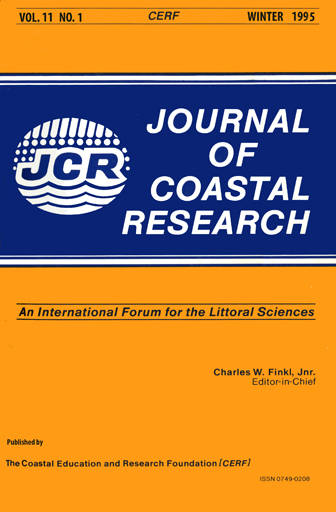Late Holocene Relative Sea-level Rise and the Geological Development of Tidal Marshes at Wells, Maine, U.S.A.
Keywords:
Botanical changes, Gulf of Maine, salt-marsh evolution, radiocarbon datingAbstract
Tidal marshes along the Webhannet and Little Rivers of the Wells National Estuarine Research Reserve, Maine, U.S.A., are protected by barrier beaches and underlain by a relatively thick sequence of late Holocene estuarine and back-barrier sediment. More than 50 cores from the salt marshes at Wells were collected to evaluate geological and botanical development of the estuaries, and to determine the local, late Holocene rate of relative sea-level rise. New radiocarbon dates were employed to construct a local relative sea-level curve. Sea level rose at an estimated rate 0.8 mm/yr at 4,000 BP, slowed to 0.4 mm/yr at 2,000 BP, and 0.2 mm/yr at 1,000 BP. Modern tide gauges in Maine began to measure a contemporary rate of relative sea-level rise of around 1.0-2.0 mm/yr between 1940 and 1990, suggesting a much accelerated rate of rise analogous to mid-Holocene rates. During the mid-Holocene period of rapid sea-level rise, sediment collected in the deeply cut fluvial channels remaining from the lowstand of sea level. Interfluves of the estuaries, floored by glacigenic sediment, were covered by tidal flat deposits and the low marsh plant, Spartina alternifiora. Tidal channels migrated very slowly and remained confined to channels cut by rivers during the sea-level regression. By about 2,500 BP, the rate of sea-level rise slowed, and the marsh increasingly became dominated by the high marsh plant, Spartina patens. Rapid contemporary sea-level rise is associated with narrowing of the barrier beach and widening of tidal creeks, as the back-barrier and estuarine system adjusts to the new sea-level regime.


